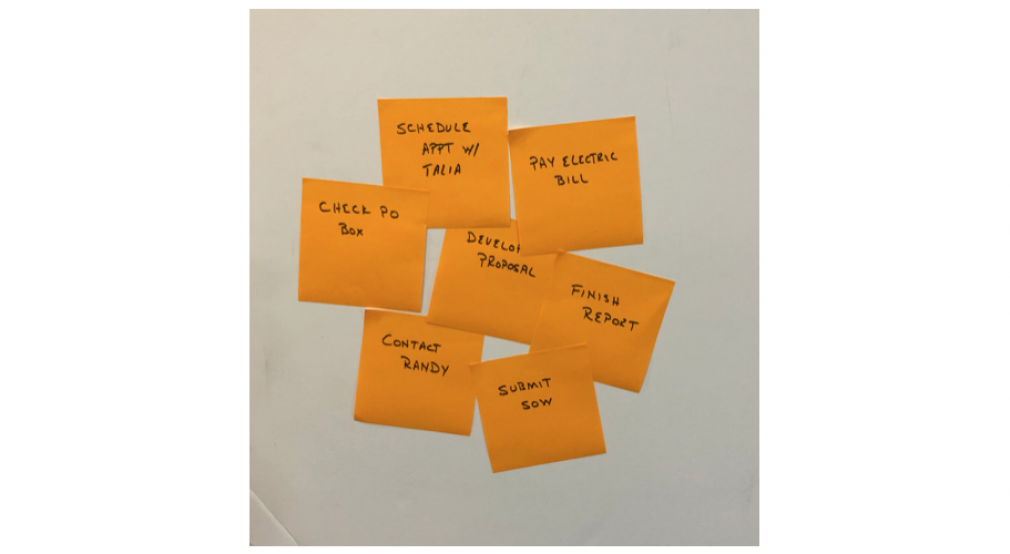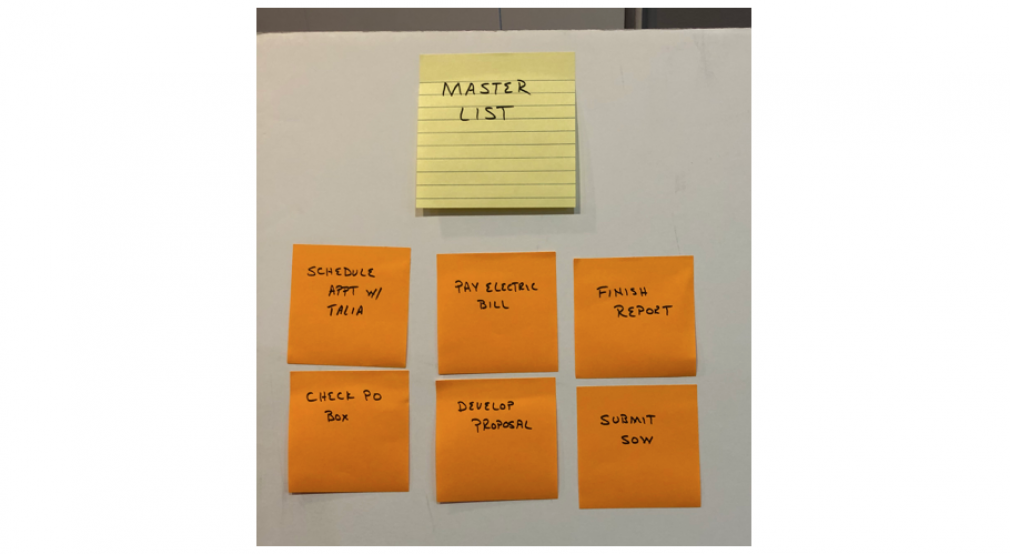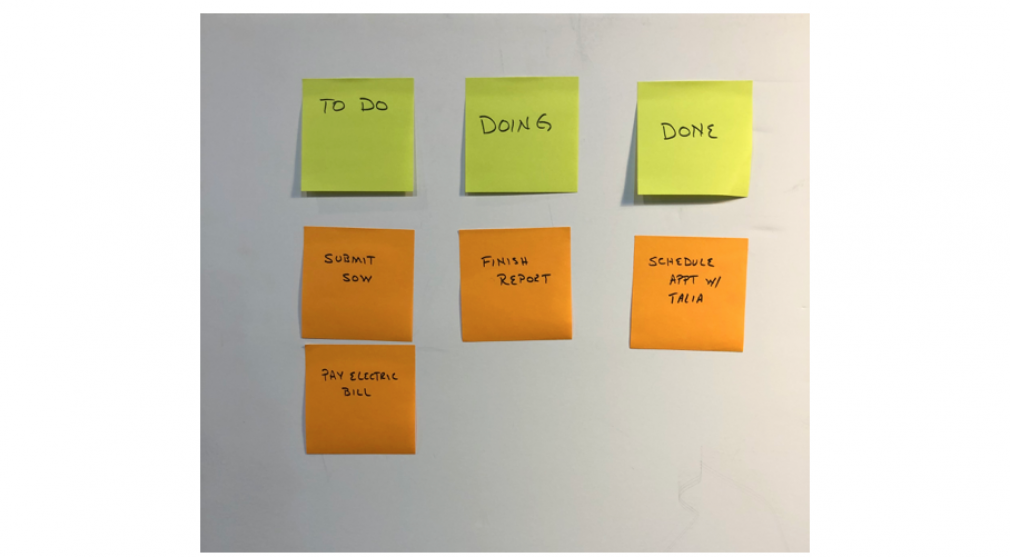Sometimes the act of simply prioritizing tasks can take as much energy as performing the task. Weekly planning and prioritizing tasks can minimize distraction and help you focus.
In our modern, always-connected world we are expected to simultaneously manage multiple sources of information. Email, text messages, meetings, and coworkers all provide endless interruption and create a strain on our minds, leading to an increase in cognitive load. According to Marie Lacroix, a neuroscientist, and co-founder of the research agency Cog’X there are a few personal practices that will help you manage the mental strain of work. She suggests:
A tool that is designed to manage this prioritized list of things to do is called Personal Kanban. (The word Kanban is the Japanese word for signboard.) Kanban as a method of managing workflow was originally developed by Taiichi Ohno at Toyota many years ago. He developed it to improve manufacturing efficiency and support just-in-time manufacturing and scheduling systems. By making the work visible on a signboard, this technique keeps the team’s current goal visible and top of mind.
Applying Ohno’s method to your to-do list is simple and very effective. There are only two rules in this technique: visualize your work and limit your work in progress.
The act of making your work visible is similar to Lacroix’s suggestion of listing all of the tasks on your mind. This practice will clear your mind and help you begin to understand what is important. List everything you are thinking about - small tasks, large tasks, expectations of your boss, your coworkers, your family, and friends. Get it all out of your head and onto paper. The Personal Kanban approach suggests that you put all of these things on Post-It notes, one item per note.

While merely clearing your mind can be helpful and reduce cognitive load, prioritizing and visualizing your current state will help you get laser-focused. Take the pile of Post-It notes and organize them by priority. Neuroscientists have found that the act of prioritization is quite a bit of work. Focus on the task of prioritization of your work will reduce stress at a later time and help you flow through the list of tasks rather than second-guessing yourself and wondering if you should be doing something different.
As you prioritize your list of things to do, you have the opportunity to practice Lacroix's second suggestion: let go of the non-essential tasks. Let's face it. Too often, we have more on our minds than we actually can accomplish. Be kind to yourself. Let go of the things that don't help you achieve your goal. Do not take on more than you should.
Place the prioritized set of Post-It notes on a board or piece of paper. This list is your master to-do list. Another way of thinking of this list is as your list of to-do 'options.'

As Lacroix suggests, we want to approach a task, or list of tasks, with a short-term objective. This goal leads to implementing the second rule of Personal Kanban: Limit the work in progress. Reduce the Master To-Do List down to a shorter list of things to accomplish the next week or two at the most. From the Master List, select the top priority items that you expect to complete over the next week. Place these Post-It notes on the left side of another board or sheet of paper under the heading "To Do."
Adding two other columns to this new board helps you continue to visualize your work: Doing and Done. As you begin a task, move the Post-It note from the To-Do column to the Doing column. Upon completing the task, move the Post-It note again from the Doing column to the Done column. The figure below illustrates this flow.

This method of visualizing your work will remind you of your priorities and help you focus. The week's goal is to move all of the Post-It notes from the "To Do" column to the "Done" column. The movement of the Post-It notes provides visual feedback on your progress towards your goal.
Personal Kanban also provides feedback through the visualization of your work. Based on your momentum for the week, you can understand whether you will meet your goal and adjust when necessary.
Lastly, when you plan out your week, you can evaluate whether you have the skill to meet the planned tasks' challenge. If you have tasks that you are not sure how to complete, you can add new sub-tasks to increase your skill and help you meet the challenge. In this way, you can create an environment that supports flow by knowing your goal for the week, receiving regular feedback, and ensuring a balance between challenge and skill. Don't over-promise to yourself or under deliver.
Personal Kanban provides a method for planning out a week; the Pomodoro Technique provides a way for planning your day. These two tools combine into a powerful productivity discipline.
According to Csikszentmihaly's research, complete engagement in a task is one of the happiest moments in a person's life. The discipline to create an environment that supports this state of flow is essential. Personal Kanban directly supports the constructs required for a flow experience, which then supports a happier you.